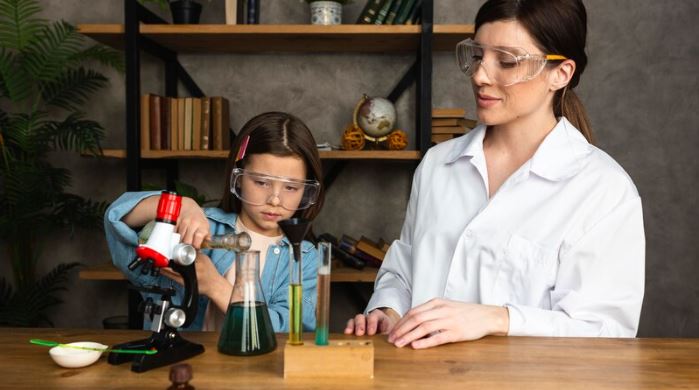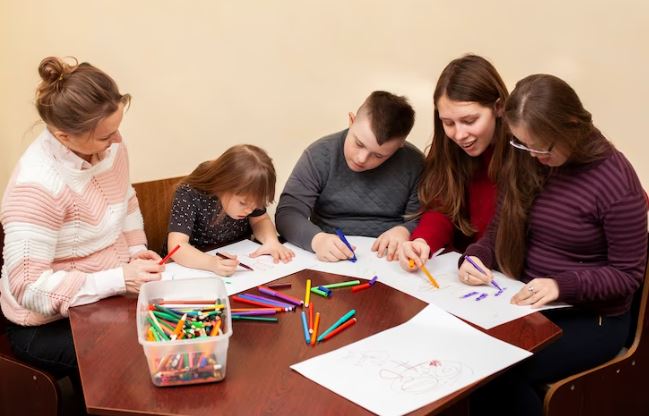
If your child has recently been diagnosed with autism spectrum disorder, you are probably worrying and wondering about what’s the next best step. You may be uncertain about how to best help your little one or confused by the numerous treatment options and advice available online.
While it is true that ASD is not a condition that a child eventually ‘grows out of,’ there are various innovative tools that can assist them in acquiring new skills and overcoming a wide variety of developmental challenges.
And on that note, let’s explore the top 10 innovative tools and strategies for supporting children with autism spectrum disorder (ASD) –
Picture Exchange Communication System (PECS)
Picture exchange communication system incorporates the use of pictures to help children with ASD communicate effectively. Through this approach, children learn to select and exchange cards with symbols, words, pictures, or photographs in order to convey their needs. Moreover, studies have also demonstrated that PECS can play a vital role in decreasing tantrums as well as odd behaviors.
Augmentative and Alternative Communication (AAC) Devices
AAC devices are characterized as electronic equipment that assist children with ASD in communicating and interacting with others. These devices can be customized to suit individual needs and may include pictures, symbols, and text. While no-tech and low-tech AAC options include writing, drawing, gestures and facial expressions, and pointing to photos and pictures, high-tech AAC devices entail the use of a computer with a ‘voice’ (speech-generating device) as well as apps, iPads, or tables to communicate.
Cognitive Behavioral Therapy (CBT)
Cognitive behavioral therapy can be an effective treatment option for children on the autism spectrum, who have other mental health conditions. These include depression, anxiety, and attention deficit hyperactivity disorder (ADHD). A 2010 study also found that CBT, when incorporated with active parent involvement, showed promise as an effective therapy for children aged 3 to 7 with anxiety.
Applied Behavior Analysis (ABA)
ABA is a form of highly structured therapy that focuses on increasing desirable behaviors and decreasing undesirable behaviors. ABA is well-known as an evidence-based intervention for children with ASD. It is majorly used to help children with autism as well as other developmental disorders, learn behaviors that help them lead more fulfilling and safer lives.
Assistive Technology
Assistive technologies include devices and software that help children with ASD access and participate in learning activities. These comprise tools like text-to-speech software or adapted keyboards. Some examples of assistive technology include battery-operated sensory toys, social skills videos, and visual timers, among others.
Peer-Mediated Interventions
Peer-mediated interventions involve pairing children on the spectrum with typically developing peers. This can help them develop social skills and encourage participation in community-based activities, as well. Peer-mediated interventions also involve teaching peers to interact with and support children diagnosed with ASD, which can play a vital role in promoting social skills and inclusion.
Play Therapy
Play therapy is a form of therapy that enables children to express themselves through play. By using play as the medium, children are able to better explore their feelings and share them with their parents and therapists. Play therapy results in significant improvement in areas such as social skills, language development, regulating emotions, reduction of stereotypical behaviors, or enhanced gross and fine motor skills.
Occupational Therapy
Occupational therapy can help children with ASD improve their fine motor skills, sensory processing, and activities of everyday living. Aligning with this, an occupational therapist’s main role is to inculcate daily life skills, such as self-care, independent dressing, grooming, and eating.
Speech Therapy
Speech therapy can help children with ASD improve their communication skills, including speech, language, and social communication. With the ultimate goal of helping the child interact in more functional and effective ways, speech therapy can help children on the autism spectrum improve their nonverbal, verbal, and social communication skills.
Parent Training and Education
Providing parents with education and training on how to support their child with ASD can significantly help improve their child’s outcomes and overall family functioning. This approach constitutes a wide range of interventions, including psychoeducation, care coordination, programs designed to address maladaptive behaviors, and treatments for social or language development.
In essence, the above-mentioned approaches play a crucial role in improving the developmental outcomes of children with ASD. By tailoring individualized and effective support, innovative tools, as well as strategies, facilitate the acquisition of important life skills and abilities. Ultimately, this enables children diagnosed with autism to achieve greater autonomy and more enriching life experiences.
As discussed, there are a multitude of innovative tools and strategies available to help children with ASD succeed and thrive. These include –
- Picture Exchange Communication System (PECS)
- Augmentative and Alternative Communication (AAC) Devices
- Cognitive Behavioral Therapy (CBT)
- Applied Behavior Analysis (ABA)
- Assistive Technology
- Peer-Mediated Interventions
- Play Therapy
- Occupational Therapy
- Speech Therapy
- Parent Training and Education
However, it is important for parents and caregivers to stay up-to-date on these advancements and seek out resources to support their child’s needs.
Since every child on the autism spectrum is unique, they may require different types and levels of care. And Early Autism Services (EAS) is committed to providing the best resources for children with autism as well as their families, personalized to their individual needs.
Our team of experts is trained in the latest techniques and strategies, and we are dedicated to helping each child reach their full potential. So, if you are looking for the best autism care for your little one, make sure you get in touch with us right away.
We are here to help and support you every step of the way!


Recent Comments